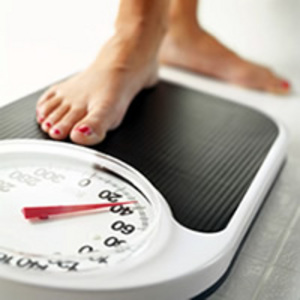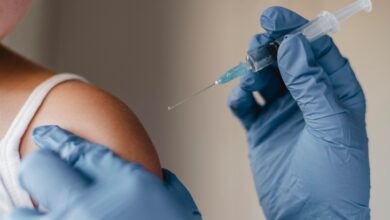How to lose weight

Do you want to slim down fast for that beach vacation or high school reunion? While there are many things you can do to shed pounds, losing weight too quickly, like any sudden change to your body, can be dangerous. While fad diets, diet pills, and fasting may indeed induce rapid weight loss, these methods can cause you to get gallstones, start losing muscle and hair and may also injure your heart and other organs fairly quickly. The best solution? Don’t go for an overnight miracle. Instead, follow these steps to lose weight rapidly, healthily, and sustainably.
1. Have confidence in yourself. You should know that the exact reason that stimulates you to reduce your weight. This will help keep you motivated in your weight loss program.
2. Set an achievable goal for your weight reduction. If the aim is not practical then you will easily get disheartened and stop following your regime. You must set a target that has a time limit. The amount of weight you want to lose and the time within which you would like to lose it should be decided beforehand. If the time and amount of weight is clearly decided primarily, then your enthusiasm will keep you on the track until you reach your destination.
3. Determine your daily caloric intake. Losing weight is simply an activity. Lower your calories intake without starving. Remember to calculate your metabolism. The metabolism is a large part of your calories burned in an average day. To win the battle, know how many calories you consume in a day.
4. Only eat breakfast, lunch and dinner. Do not snack when you are bored. That is a terrible habit and it just makes you obese.
Write down all the things you eat on a typical day. Carry a small notebook with you and write down every snack, every drink, and the contents of every meal. There are also great websites that you can use to keep track of calories, get recipes, and help achieve your goal. Don’t forget to include the pats of butter or the spoonful of sugar in your coffee. It’s best to do this for at least a couple weekdays and a weekend; it’s even better if you can go a full week.
Do an itemized calories count. When possible, write down the number of calories in each thing you eat as you eat it. Keep in mind that the recommended serving size is often considerably smaller than the serving you actually eat. Look up the calorie count on the internet for foods that don’t have calories listed on the container or for fast food meals. You don’t have to be 100% accurate, but you do want a good estimate of the number of calories you’re taking in. There is an idea that multiplying your ideal weight by ten will produce a rough estimate of the number of calories you need to eat per day to maintain your weight. This is not true for everyone. You may wind up grossly under or over estimating the number of calories you should be eating. Consult a nutritionist. Use a scientific or health website to determine the number of calories you should eat a day or consult your doctor. Everyone has different metabolisms and there is no blanket rule that covers everyone’s recommended calorie intake. Reducing 500 calories per day from the calories you eat to maintain your weight can help you lose a kg per week.
5. Go over the list and decide which foods to cut out or reduce. Cutting calories is usually a lot easier than you might think. For example, that daily tall latte in the morning may pack 500 calories. Since a kg of flab (lost or gained) is roughly equivalent to 3,500 calories, replacing that rich beverage with black coffee can help you lose a kg a week. Other easy cuts include salad dressing (salad dressing is the number one source of fat in the average woman’s diet[4]), soda pop, candy, and butter. Look at the nutritional information for the foods you eat, pay special attention to your intake of saturated fats and empty calorie, high-sugar foods. You don’t need to cut these things out entirely, but if you reduce your intake of high-fat, high-calorie foods you’ll lose weight faster.
6. Seek out alternatives to the unhealthy foods you’ve identified. You can simply reduce the amount of soda you drink or mayonnaise you put on your sandwiches, or you can substitute healthier choices. Drink water instead of soda, for example, or use mustard instead of mayo. Low-fat and low-calorie options are also available for most foods, and many of these are natural, (although some may contain chemicals), and tasty. Start trying to eat healthy in most meals:
Choose lean meats. Chicken and fish are both very low in fat, and certain fish like salmon, sardines, and fresh tuna are excellent sources of antioxidants and Omega-3 fatty acids, which are also beneficial to your health, so aim to replace some or all of the beef or pork in your diet with these foods.
Replace high-calorie side dishes with healthier alternatives. Many people get a ton of calories from side dishes such as macaroni and cheese, Chips, or potato salad. You can eat healthier and lose weight by replacing these with fresh vegetables and salads. Pre-made salads are practically effortless, and when accompanied by a reduced-calorie dressing or no dressing at all, they’re weight-loss gold.
Start your days off right. A fattening breakfast of bacon and eggs or a pastry can be replaced with yogurt, oatmeal, high-fibre, low-sugar cereals; or fresh fruit for fruit smoothies. However, for those on a low carbohydrate diet bacon and eggs are a great combo for breakfast, since neither have carbs. But don’t fall into the trap of skipping breakfast. Eating a healthy breakfast increases your rest metabolic rate earlier in the day, and reduces snacking before lunch.
7. Plan your meals. Look for healthy, delicious meals online or in your cookbooks, and create a menu for the week. Make sure that your meal plan reduces your total calorie intake: you’re not going to lose weight if you consume the same amount of calories by eating different foods. Make a list of what you’ll need for these meals, and — except for a few snacks, of course — don’t stray from your list when you get to the market. Planning your meals helps ensure you get a balanced diet and reduces the temptation to stop off for fast food or order a pizza. Remember, it’s easier to stick to your shopping list if you shop when you aren’t hungry – this will help avoid impulse buys which contribute to calorie consumption.
8. Watch your portion sizes. Eating a whole bag of rice cakes in one sitting won’t help you lose weight. When eating chips, nuts, or dried fruit, put a portion in a small bowl and then put the bag away. That way you won’t mindlessly eat a larger portion than you had intended. Even if you only make minimal changes to your diet choices, reducing portion size will inevitably reduce caloric intake. A great way to watch portion sizes while snacking is to buy one serving 100 calorie packages – and they come in many favourite snack food items! Eat slowly to avoid overeating; you will get satisfied with fewer calories.
9. Graze on healthy snacks. Just because you’re getting healthy doesn’t mean you can’t snack. In fact, eating small meals and snacks throughout the day, or grazing, has been shown to aid weight loss, compared to eating three large meals a day, by keeping metabolism steadier. Pick snacks that are low in calories and fat and high in fibre dried apricots, nuts, rice cakes, fruits, baby carrots, cherry tomatoes, and so on. Vegetables are generally very low in calories, very high in fibre, and full of flavour and nutrition. Avoid starchy vegetables like potatoes, and try to eat vegetables plain, without fatty dressings or dips. Fruit also makes a good snack. Fruit contains more soluble fibre than vegetables, which slows your body’s absorption of carbohydrates, thus releasing energy more slowly preventing sugar highs, and keeping you feeling full longer. Fruit juices are not a replacement for the real thing. You need that fibre, and juices often have more calories than the equivalent serving of fruit and as many calories as soda! Be careful with dried fruits, because without the water, you tend to eat more, and fruits, when dried, are calorie-rich per ounce. With any dry or dried food, be sure to drink plenty of water.




